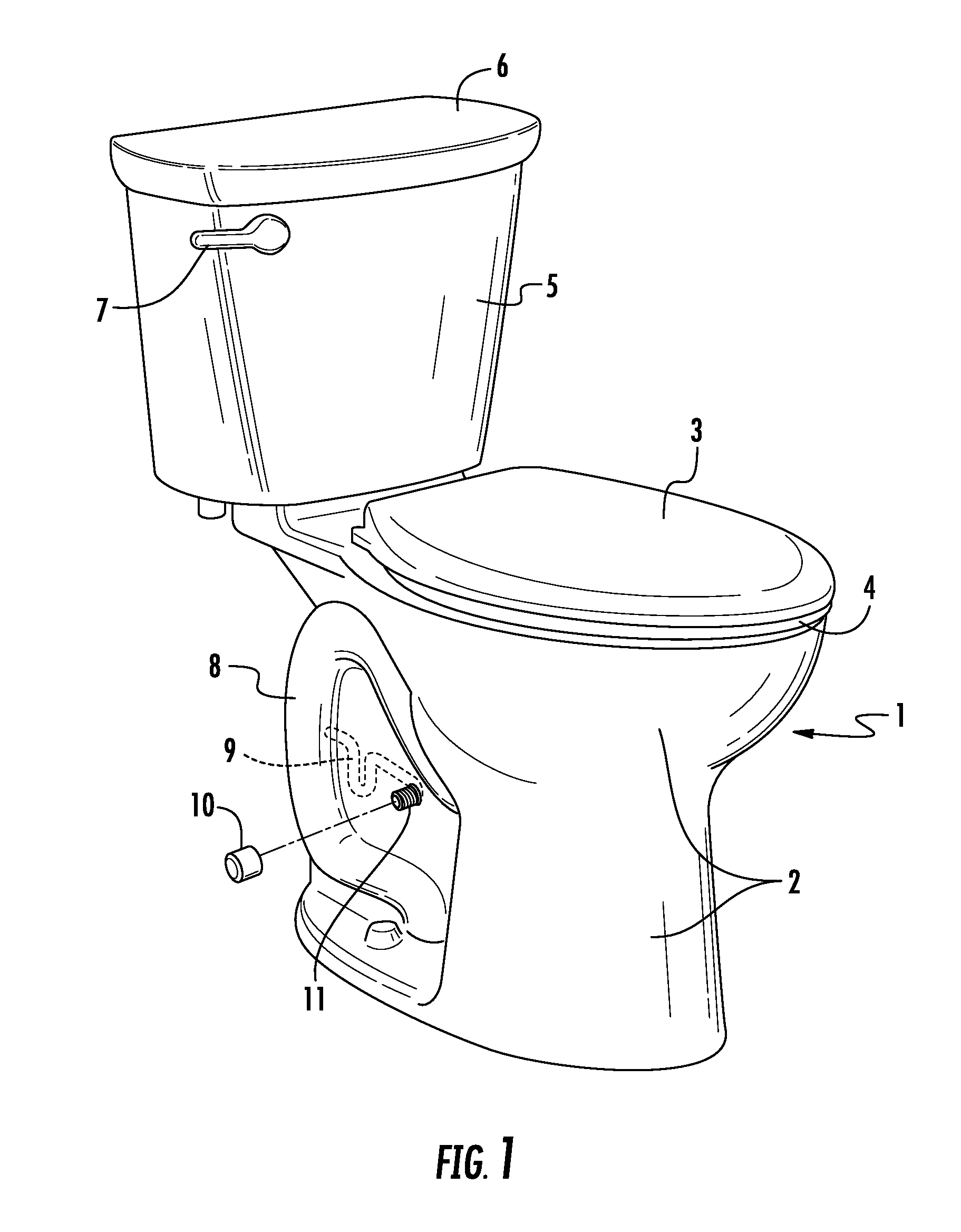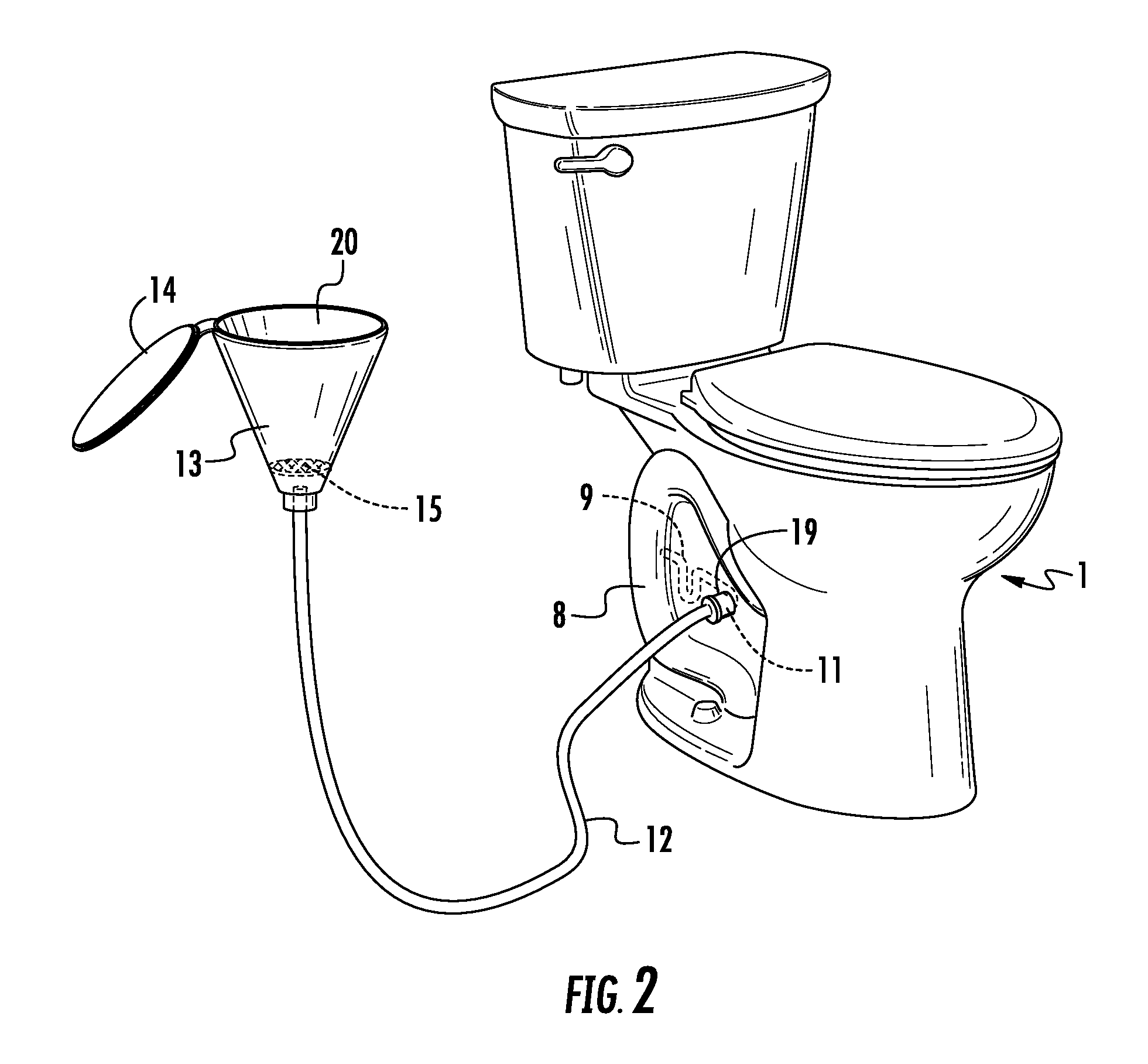System for minimizing water usage and splash during urination
a technology for urination and water usage, applied in water installations, water closets, constructions, etc., can solve the problems of substantial splashing, contaminating the rim, side and seat of the toilet bowl, affecting the modern conception of cleanliness, hygiene, water conservation, etc., and achieve the effect of avoiding splashing
- Summary
- Abstract
- Description
- Claims
- Application Information
AI Technical Summary
Benefits of technology
Problems solved by technology
Method used
Image
Examples
Embodiment Construction
[0022]This description does not limit the invention, but rather illustrates its general principles of operation. Examples are illustrated with the accompanying drawings. A variety of drawings are offered, showing the present invention incorporated into two primary embodiments.
[0023]FIG. 1 shows a standard residential toilet 1 plumbed for the current invention 9, 10, 11. A standard toilet 1 is comprised of an integral base and bowl 2, a seat 4, a seat lid 3, a tank 5, a tank lid 6, and a flush handle 7. The toilet has a main water trap 8, apparent here by a bulge. In a standard flush toilet 1, the main water trap 8 may be apparent with a bulge, or may not be apparent from the outside. Nonetheless, all standard toilets 1 have a main water trap 8. In order for the present invention to be integrated with a traditional flush toilet 1, all that is required is a standard, threaded plumbing fitting 11 and an internal pipe 9, that extends from the threaded plumbing fitting 11 to the main wat...
PUM
 Login to View More
Login to View More Abstract
Description
Claims
Application Information
 Login to View More
Login to View More - R&D
- Intellectual Property
- Life Sciences
- Materials
- Tech Scout
- Unparalleled Data Quality
- Higher Quality Content
- 60% Fewer Hallucinations
Browse by: Latest US Patents, China's latest patents, Technical Efficacy Thesaurus, Application Domain, Technology Topic, Popular Technical Reports.
© 2025 PatSnap. All rights reserved.Legal|Privacy policy|Modern Slavery Act Transparency Statement|Sitemap|About US| Contact US: help@patsnap.com



